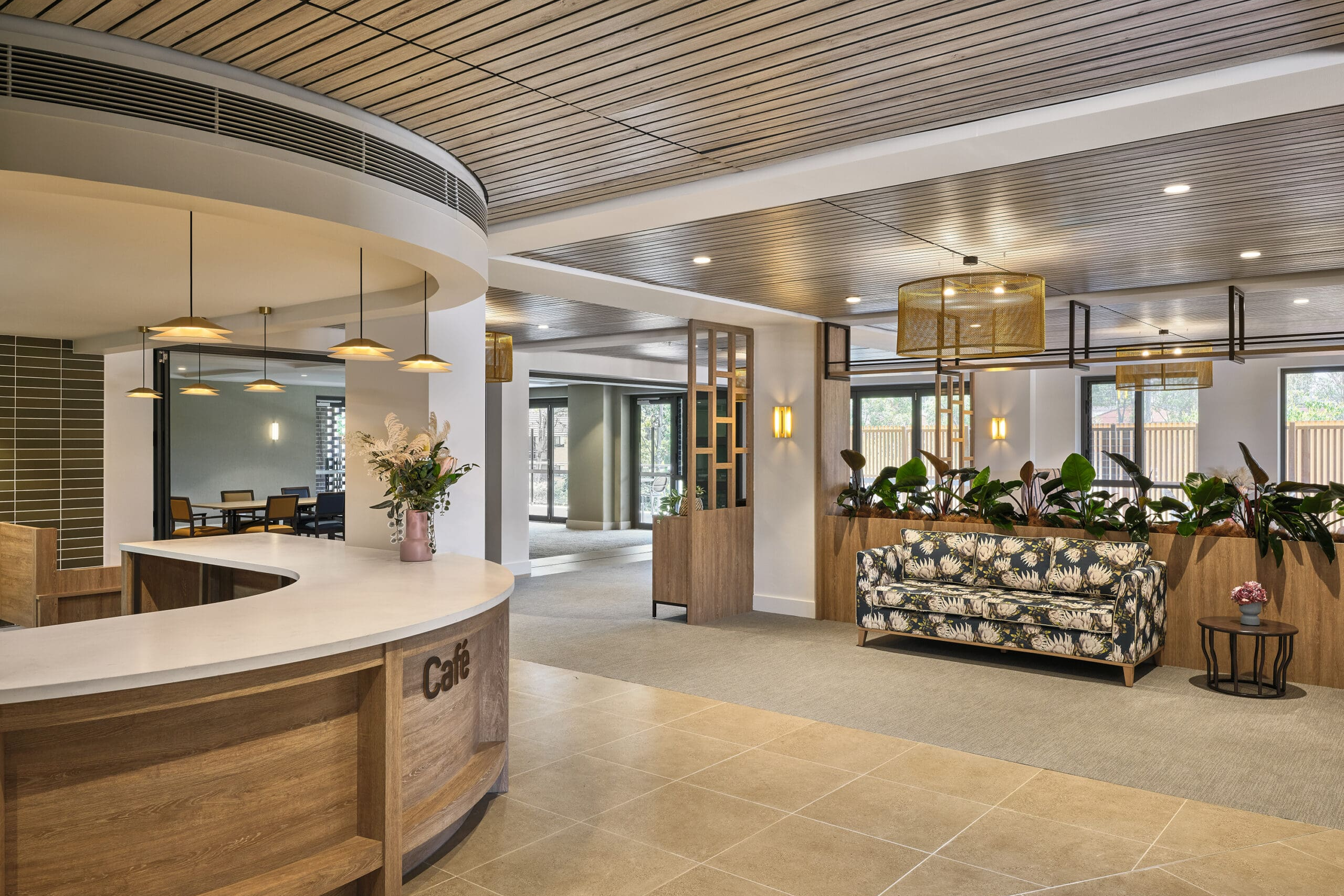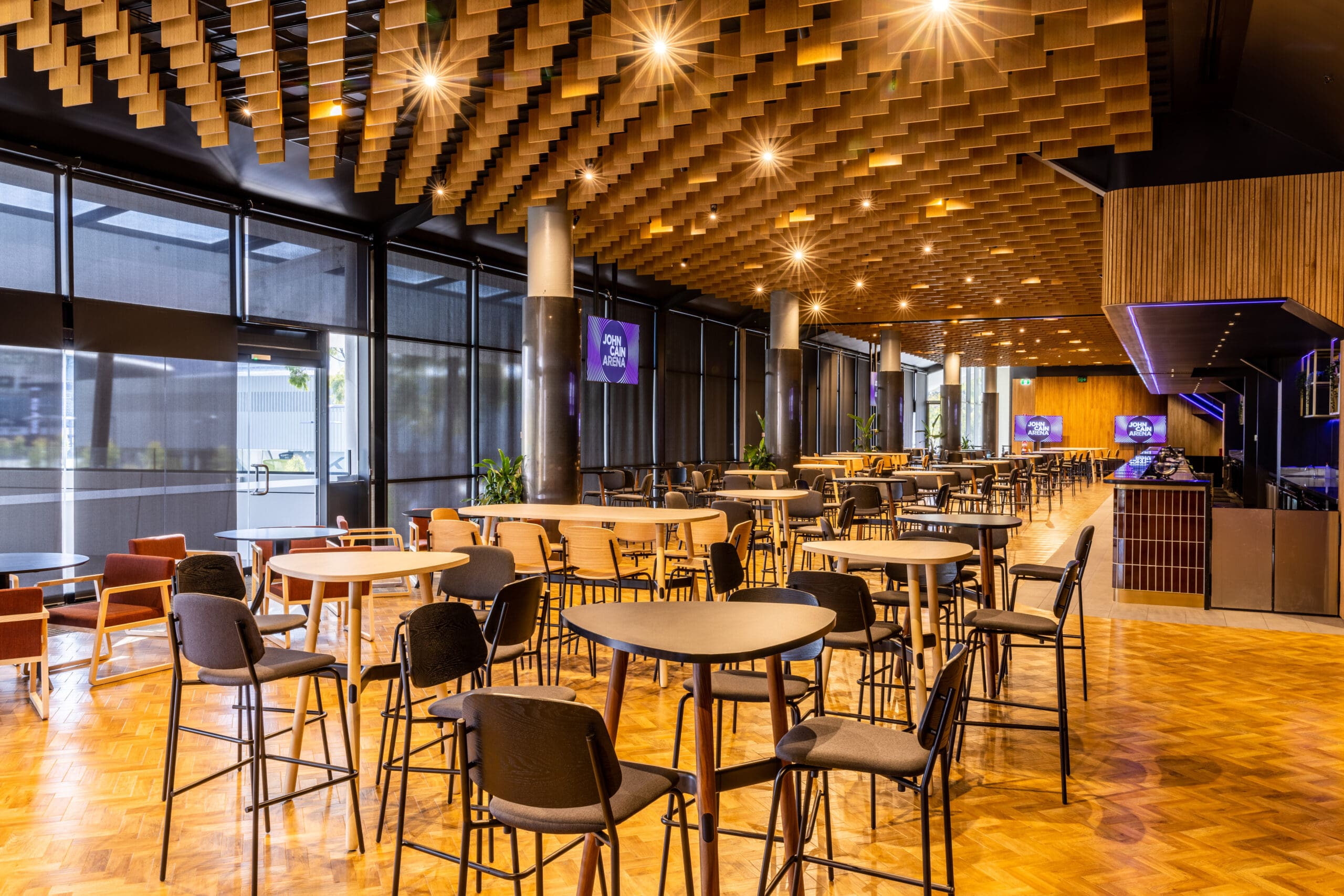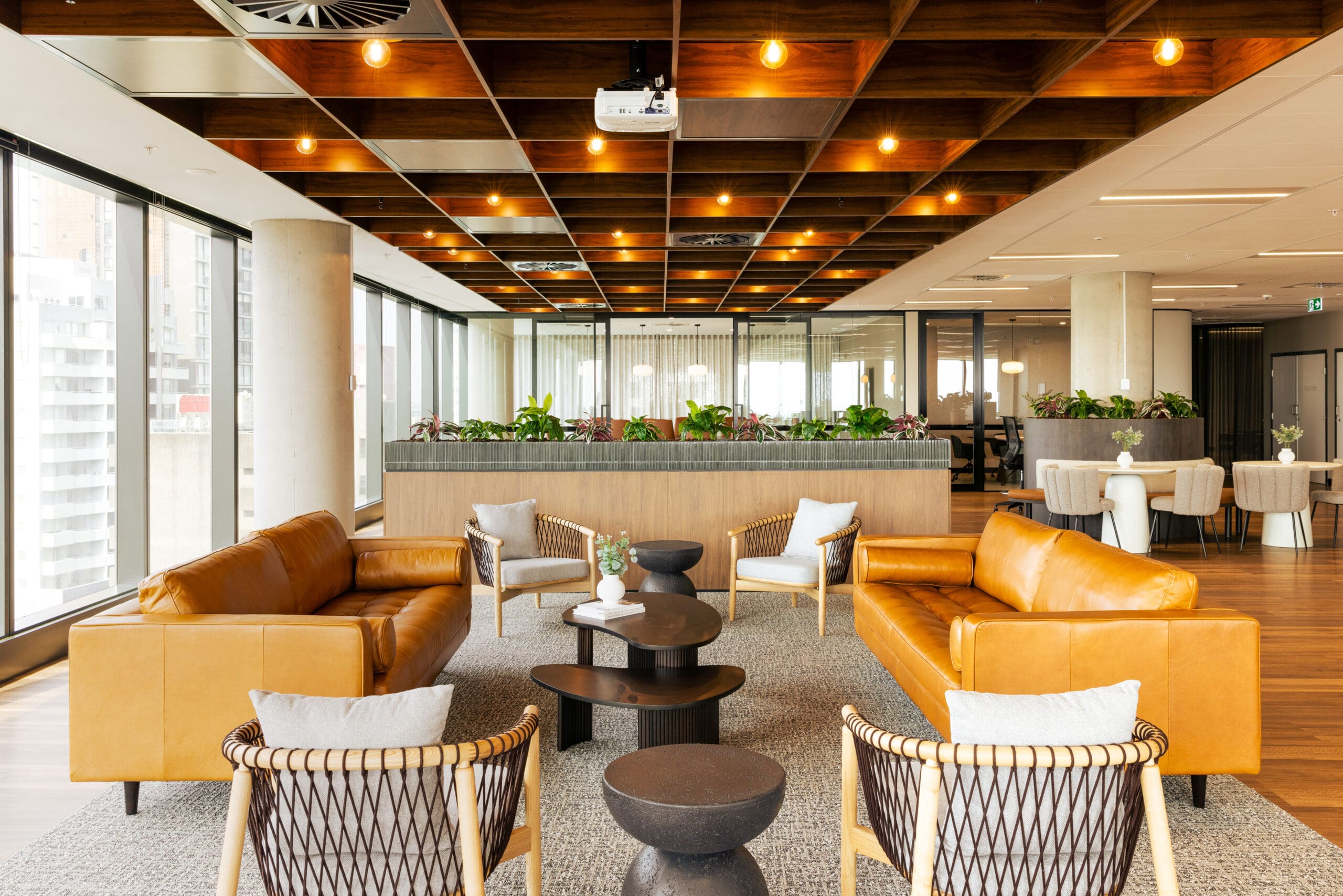Acoustic Absorption
When sound waves enter a room, they bounce off hard surfaces such as walls, ceilings, and floors, creating echoes and reverberations. These reflections can make hearing difficult and create an unpleasant listening experience.
Sound absorbing panels, like SUPACOUSTIC, are specifically designed to improve the acoustics of interior spaces by reducing reverberation, echoes and sound reflections. SUPACOUSTIC acoustic absorption panels absorb these sound waves, reducing their intensity and preventing them from reflecting off surfaces.
SUPACOUSTIC timber acoustic panels are designed with precision perforations or slots, allowing sound waves to enter and be absorbed by the acoustic material inside the panel. These acoustic panels are also available in various thicknesses and shapes to suit different applications and can be easily installed on walls or ceilings.
By reducing sound reflections and controlling the reverberation time, sound-absorbing panels like SUPACOUSTIC can improve the acoustics of a room, making it more comfortable to communicate and listen in. These panels can be used in various settings, including offices, schools, restaurants, recording studios, and concert halls, among others, to create a better listening environment.
Adequate acoustic absorption is vital to the enjoyment and harmonious travel of sound within an interior space. Good interior acoustics contribute to better productivity, less fatigue in its occupants, and overall better well-being.
SUPACOUSTIC timber acoustic panels by SUPAWOOD offer superior acoustic absorption performance and decorative form, completely transforming interior spaces into architectural masterpieces.
Acoustic Insulation
Acoustic insulation is designed to improve the acoustics of interiors by reducing the transmission of sound between different spaces or between the interior and exterior of a building.
The soundproof insulation material used in acoustic insulation is specifically designed to absorb and dampen sound waves, reducing the amount of noise that is transmitted through walls, floors, and ceilings.
When sound waves encounter a barrier such as a wall, some energy is absorbed by the material, while the rest is transmitted through the barrier. Acoustic insulation works by reducing the amount of sound energy that is transmitted through walls, floors, and ceilings, thereby reducing the level of noise that is heard inside a room.
In addition to reducing the amount of sound transmitted between different spaces, acoustic insulation can also improve the sound quality within a room by reducing echoes and reverberations. This is achieved by reducing the amount of sound energy that is reflected off hard surfaces, such as walls, ceilings, and floors. By absorbing some of the sound energy, acoustic insulation can reduce the amount of sound reflections, creating a more pleasant listening environment.
Soundproof insulation can be installed in a wide range of settings, including homes, offices, schools, recording studios, and concert halls, among others. By improving the acoustics of interiors, acoustic insulation can help to create a more comfortable and productive environment, reducing noise-related stress and improving overall well-being.
In the early design stages, architects should consider the role of acoustic insulation in the overall acoustics of a building. For example, residential buildings close to busy roads or railways; or recording studios in residential or quiet neighbourhood areas must place special importance on specifying soundproof insulation.
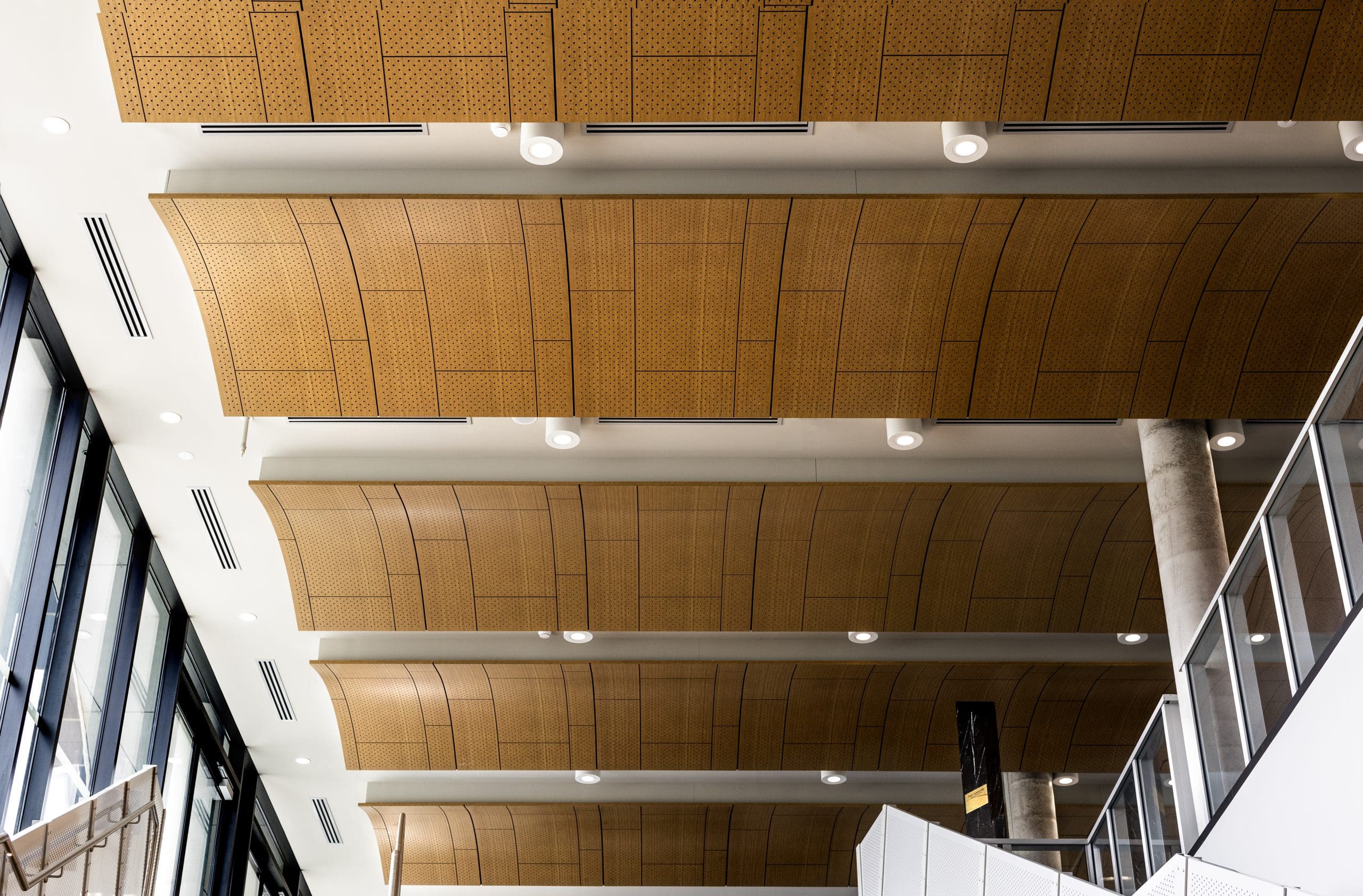
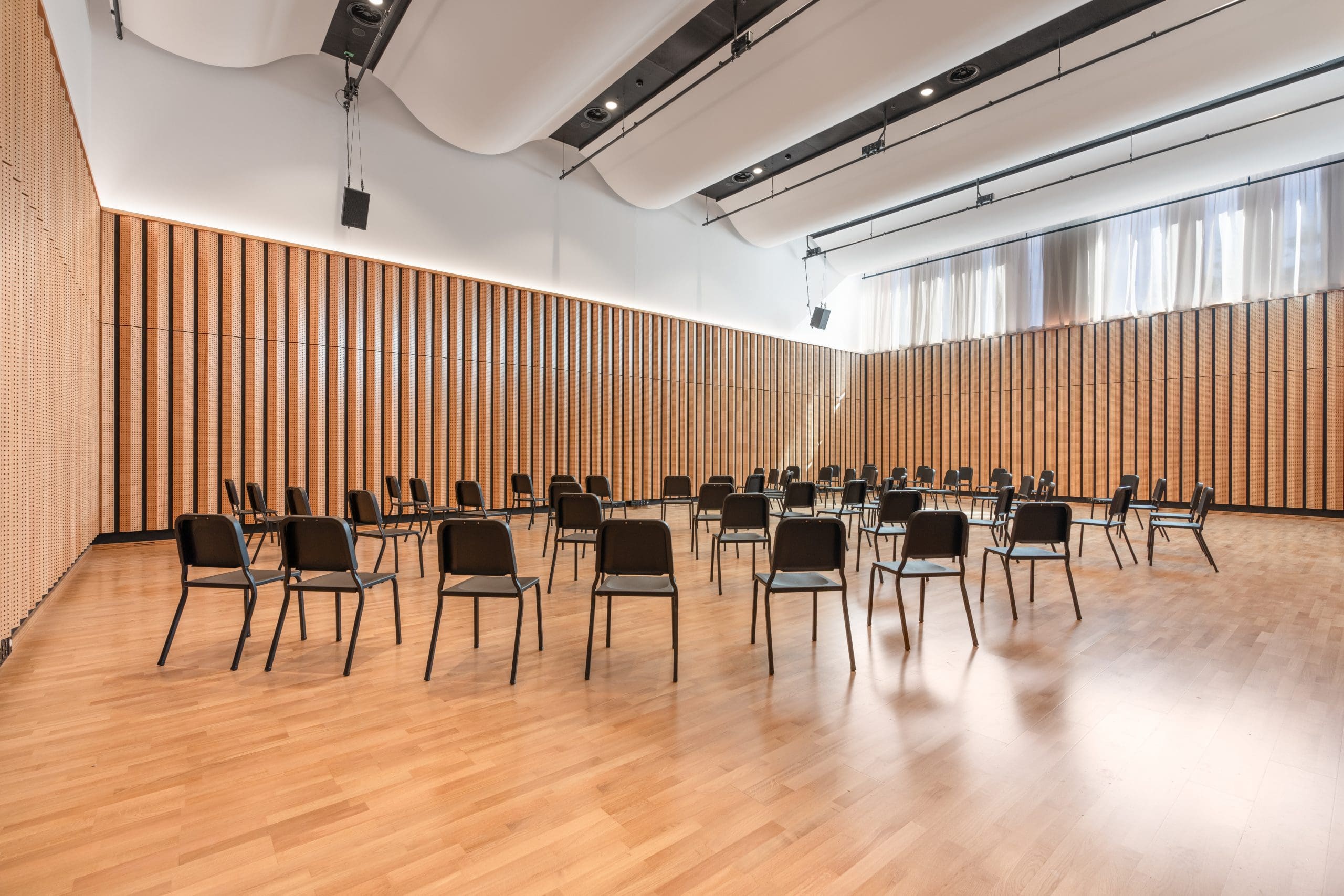
Examples of timber-based ceiling and wall acoustics
Is there a need for both Acoustic Absorption and Insulation?
Indeed! There is a need for both acoustic absorption panels and acoustic insulation to work harmoniously to achieve the best acoustic performance.
For example, in a well-insulated school interior not lined with acoustic absorption panels, the user experience may be echoey, loud and unpleasant to work or be in.
On the contrary, a room with reasonable control of echoes and reverberation due to acoustic absorption panels may be jeopardised by outside noises, such as loud traffic or machinery.
It is clear that when selecting the right products for acoustic walls, both acoustic absorption panels and acoustic insulation must be considered.
SUPAWOOD recommends seeking professional advice when pairing these two proven acoustic systems.
Reach out to an acoustic expert today to discuss any further questions.
Disclaimer: All the information on this website - www.supawood.com.au - is published in good faith and for general information purpose only. Supawood does not make any warranties about the completeness, reliability, and accuracy of this information. Any action you take upon the information you find on this website (Supawood), is strictly at your own risk. Supawood will not be liable for any losses and/or damages in connection with the use of our website.
From our website, you can visit other websites by following hyperlinks to such external sites. While we strive to provide only quality links to useful and ethical websites, we have no control over the content and nature of these sites. These links to other websites do not imply a recommendation for all the content found on these sites. Site owners and content may change without notice and may occur before we have the opportunity to remove a link that may have failed.
Consent: By using our website, you hereby consent to our disclaimer and agree to its terms.

